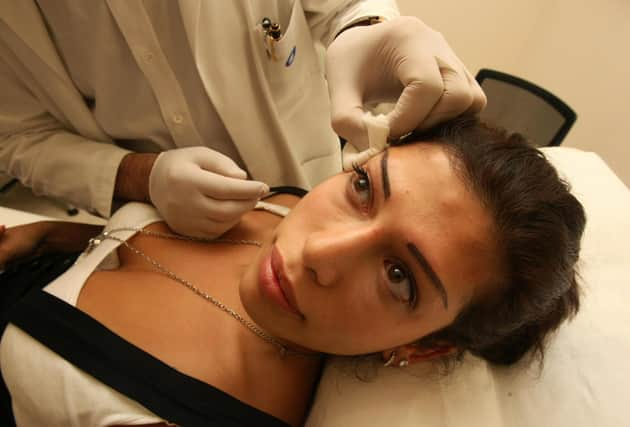Even Kardashians and Love Island stars are rejecting the fake 'beauty' of facial fillers – Laura Waddell


It’s not just a TV thing; facial fillers are part of the quintessential Instagram look, an aesthetic that evolved dramatically and quickly from its original standards of unnaturally poreless skin and digitally altered waist to hip ratios to actual physical modification in an attempt to look good online.
Lip fillers, still relatively novel only five or six years ago, can be so subtly done you might never know you were speaking to someone who had them – but now they’re so prevalent there’s a good chance of spotting the most pumped-up iterations while walking down any high street.
Advertisement
Hide AdAdvertisement
Hide AdA step beyond that are facial fillers, injected with the intention of creating shape that isn’t organically there. Think swollen cheekbones and squared jawlines. When done bluntly and badly, the face looks puffy and immobile.
The tide may turn on the trend. Influencers are posting about having work undone; former Love Island contestant and fan favourite Molly-Mae Hague had her lip filler dissolved last year, following Kylie Jenner the year prior, one of the Kardashian crew who led the charge on popularising the look.
But with the number of salons making treatments (or dubiously phrased ‘tweakments’) accessible to the general populace, advertising speedy lunchbreak appointments or tacked on to dental sessions, it doesn’t look to be going anywhere quickly.
Other than concerningly quick and easy availability, part of the appeal, I believe, is that it’s an obvious sign of disposable income, injected straight into the face, aspirational for the same reasons influencers pose with empty luxury shopping bags.
Some plastic surgeons have become vocal with their criticisms. Dr Steve Harris, recently interviewed by Insider magazine, warns against the “alienisation” of the face, and treatments that leave everyone looking the same.
There are concerns filler, rather than dissolving, can sometimes remain in the body, migrating from its original injection site, leaving faces bumpy. Is everyone who says yes to a bargain beauty treatment aware of these risks?
The social pressures linking beauty and commerce aside, I generally take an each-to-their-own approach when it comes to individuals doing what they want with their bodies.
After all, I’ve always been interested in fashion subcultures; body modification is nothing new, and as soon as I had access to the internet I was drawn to marvel at extreme goth stylings like freaky piercings and fang implants.
Advertisement
Hide AdAdvertisement
Hide AdBut what I liked most about things like that was their intention: they were deliberately weird, ostentatiously bizarre, setting out their stall as larger than life, and taking pride in being alternative. They knew exactly what they were.
On the contrary, face alterations such as facial fillers are now presented as a beauty ideal, rather than a beauty subversion, and they sell a homogenous look to a mass-market audience.
Rather than expanding the boundaries of personal aesthetic expression, body modification trends of today increasingly blur boundaries between reality and expectations.
Young faces as they are, with all their interesting, beautiful variance, can only ever fall short of this rigid beauty standard.
A message from the Editor:
Thank you for reading this article. We're more reliant on your support than ever as the shift in consumer habits brought about by coronavirus impacts our advertisers.
If you haven't already, please consider supporting our trusted, fact-checked journalism by taking out a digital subscription.
Comments
Want to join the conversation? Please or to comment on this article.
